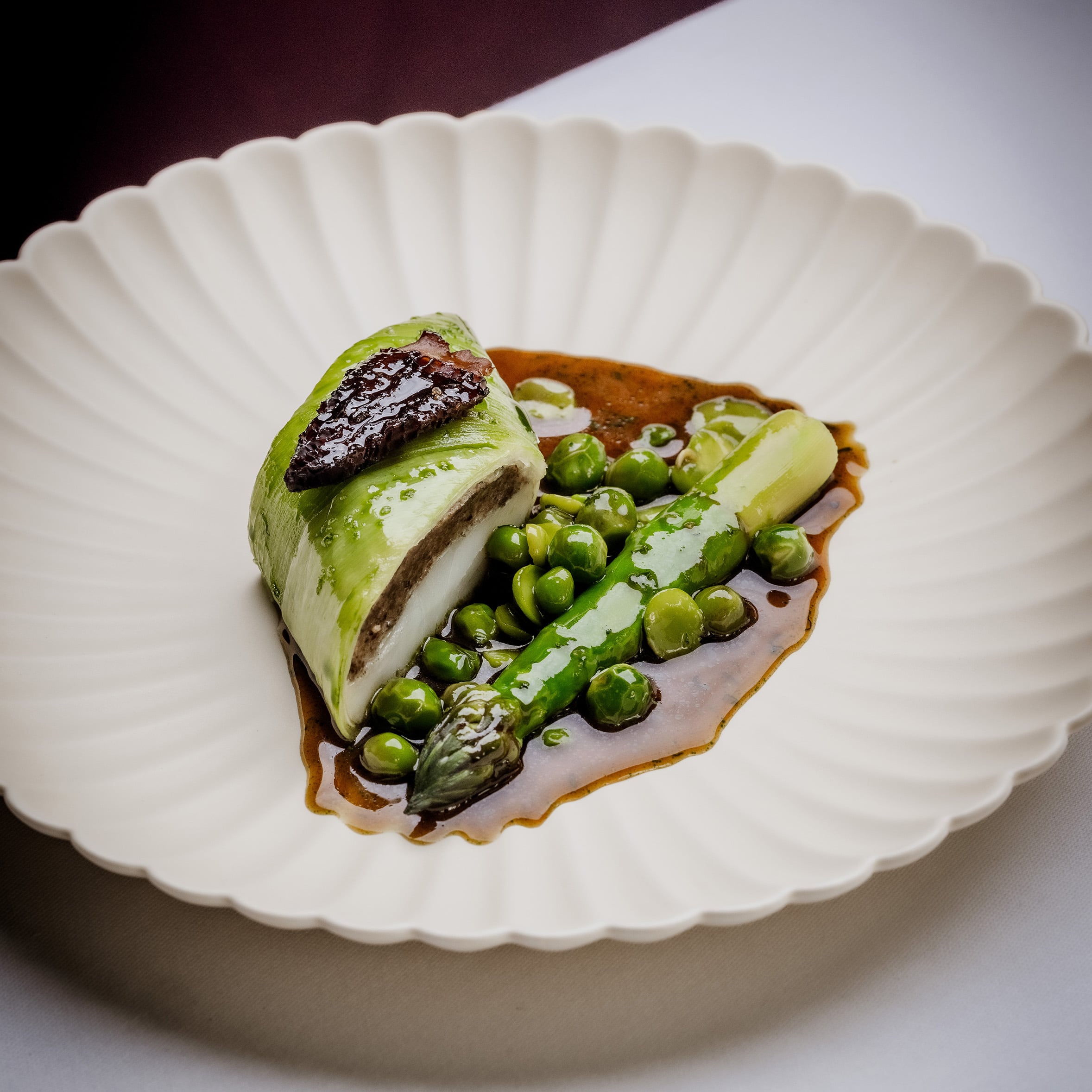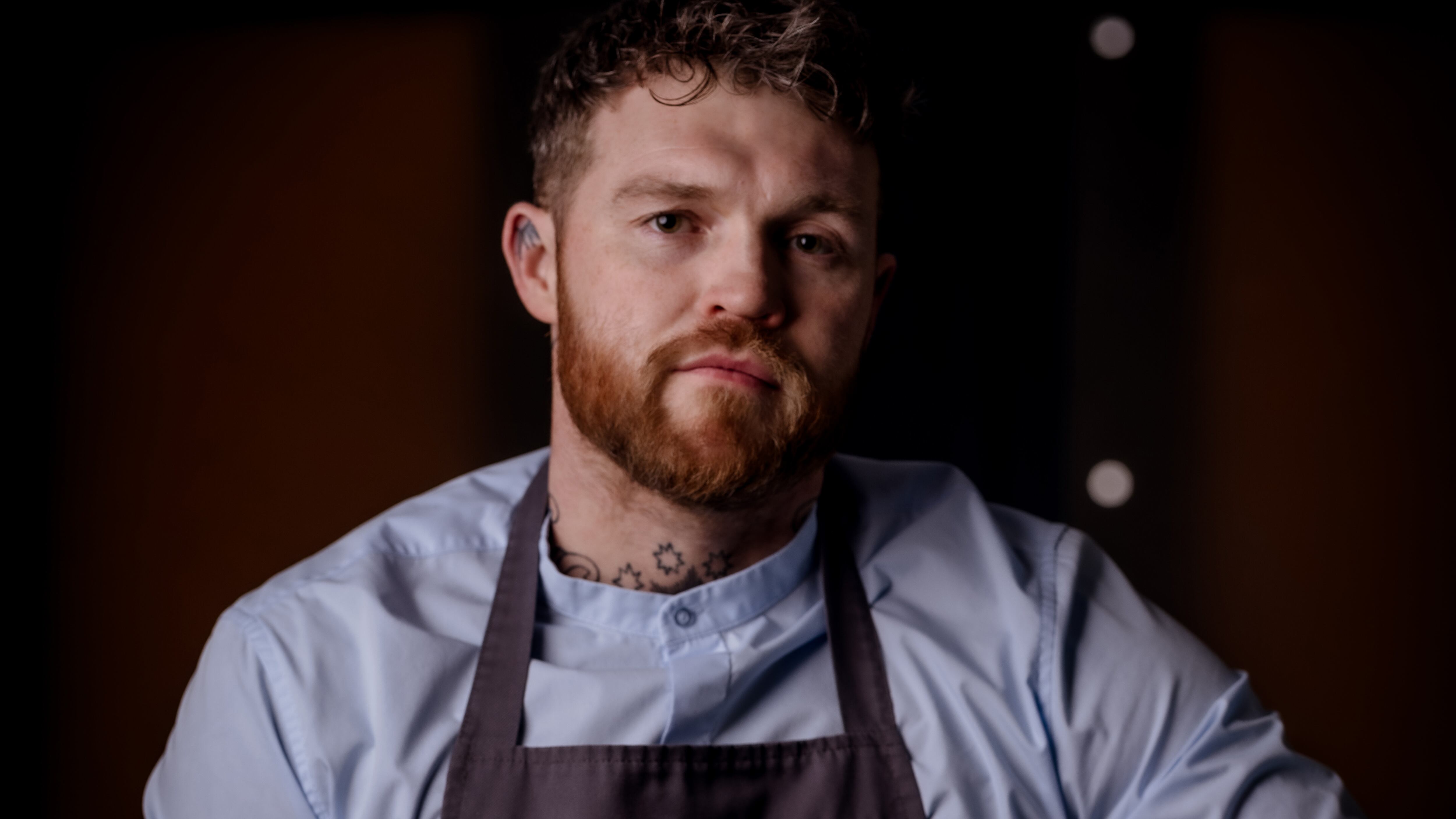You led the kitchen at The Capital Hotel while working for Nathan Outlaw almost a decade ago. What’s it been like to return?
It’s nice to be back. I had a good time here when I was working for Nathan all those years ago so it’s a full-circle moment for me. After Cornerstone closed, Solomon Khaddour (GM at the five-star Knightsbridge hotel) approached me about the possibility of returning to the hotel to take over and relaunch the restaurant under my own name. It’s an iconic place: names like Gary Rhodes, Brian Turner, Eric Chavot and, of course, Nathan have cooked here. It felt like a no-brainer.
Are there any familiar faces?
Yes, there are lots of people who were working at the hotel when I was last here, including Deano (one of the concierges) who, like me, is a huge Arsenal fan so I always have a bit of a chat with him. In terms of my restaurant team, there are a few people who worked at Cornerstone, but the majority haven’t worked with me before and are also new to the hotel. I don’t have a head chef as I’m here every day, but my two senior sous chefs are Alex Parker (who worked at Cornerstone) and Erik Cherit Miotto (who was most recently head chef at Cycene).
Has the space and kitchen changed much since you were last here?
The dining room has been refreshed, but the kitchen is largely the same. The layout is perfect, so it hasn’t changed, and the cooking suite has been here for decades. It’s old but good - they don’t make them like that anymore. We had Tom Aikens in for lunch the other day and he was amazed to see that we’re cooking on the same stove that he used many, many years ago.
When Cornerstone closed last year, you cited ‘changing customer preferences’ as the reason. What did you mean by that?
I felt that east London diners were moving away from high-end, special-occasion restaurants and looking for more casual, everyday spots rather than tasting menus or more elevated experiences. That shift made it harder to sustain a restaurant like Cornerstone in that location. It’s no secret that the hospitality industry is incredibly challenging right now, especially for chef-owned, independent restaurants. The rising costs of staffing, ingredients, and overheads made it tough to continue in Hackney Wick. With hotels, you have a lot of other revenue streams including rooms, breakfast, afternoon teas, and room service, which takes the pressure off the flagship restaurant. Being in the hotel is allowing us to use more premium ingredients such as bluefin tuna.
Does Tom Brown at The Capital serve any Cornerstone dishes?
No. We have the same ethos as Cornerstone, but we didn’t want to repeat anything. We’re not in Hackney Wick anymore, so it’s time to move on. Copying and pasting Cornerstone into Knightsbridge was never going to work. But there are some dishes that are evolutions of those we served at Cornerstone. For example, the cuttlefish cacio e pepe we did in Hackney has been reimagined as ravioli filled with cuttlefish ragu, served in a cacio e pepe sauce. Going from 60 to 28 covers has allowed us to refine things.

You say sustainability is key to your approach. Where do you get your information from?
The best thing is to chat to the suppliers. We have a very close relationship with all of our seafood suppliers but we also look at online sources, including the Good Seafood Guide and the various MSC guides. The main thing for chefs is to buy the right size species from the right size boats. The biggest problem the industry has is big trawlers fishing for species that are limited. If you’re buying dayboat catch of species that aren’t spawning and are avoiding dodgy fish farms, you’re halfway there. Other than unethically farmed fish, I wouldn’t really rule out anything - although there are some fish I wouldn’t use at certain times of year.
You do a lot of clever things with bits of seafood that most other chefs would throw away. Can you give us some examples?
We take a ‘nose-to-tail’ approach to seafood, focusing on maximising the potential of each ingredient. For example, our selection of fish charcuterie utilises underused cuts, while the cuttlefish tortellini is made entirely from the cuttlefish, making use of parts often overlooked. With scallops, we dehydrate the coral to use in one of the bread courses, and we even use the skirt (which is nearly always thrown away) to make a dashi we use to cure the scallop in. You have to clean them carefully, but they have great flavour.
You are very creative with seafood. What advice do you have for other chefs?
Don’t look at fish as a piece of fish. Look at it as a protein. Taste it raw and cooked and think about all the different cookery methods. Think about all the different parts of it and work backwards from that. Don’t just think ‘cook it to 90% on the skin and then throw some brown butter and capers in there’ - that’s so ingrained in chefs. Take a step back and think: what is this? Chefs don’t just have one way of cooking lamb.
You retained the Michelin star at Outlaw’s at The Capital and also attracted one at Cornerstone. Is it the aim to get one here?
Yes. It’s a big goal for us to do that but it’s the level that we want to be at in this room. This place has had a long history with Michelin. It was one of the first restaurants to win a Michelin star in the UK and even had two at one point (when the kitchen was led by Chavot).



